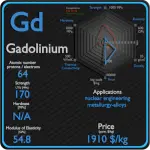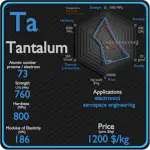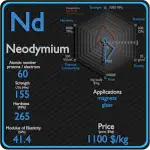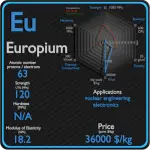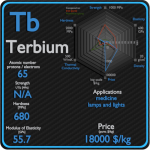This article contains comparison of key thermal and atomic properties of europium and dysprosium, two comparable chemical elements from the periodic table. It also contains basic descriptions and applications of both elements. Europium vs Dysprosium.
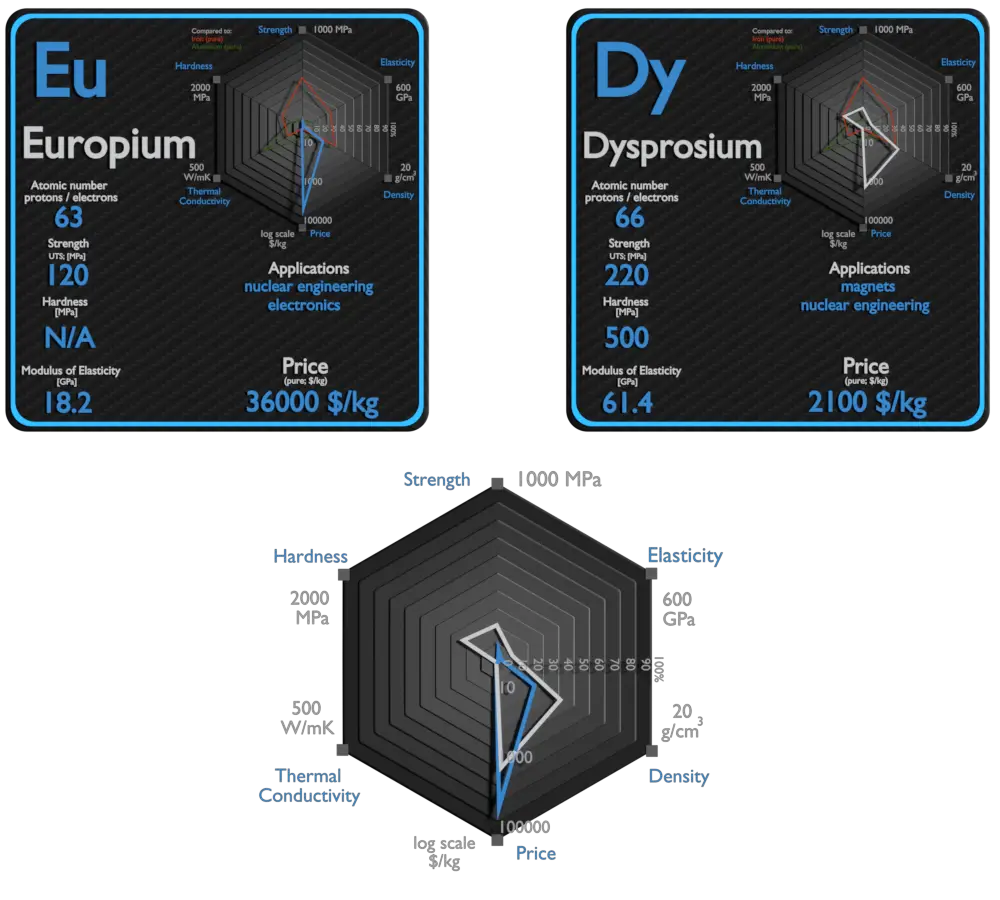
Europium and Dysprosium – About Elements

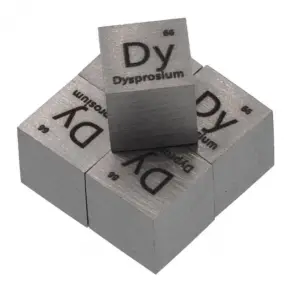
Source: www.luciteria.com
Europium and Dysprosium – Applications
Europium
Europium is used in the printing of euro banknotes. It glows red under UV light, and forgeries can be detected by the lack of this red glow. It is a dopant in some types of glass in lasers and other optoelectronic devices. Since the isotopes of europium act as good neutron absorbers, they are being studied for use in nuclear control applications, such as in burnable absorbers.
Dysprosium
Dysprosium is utilized in ferrites and magnetic alloys for microwave use. Dysprosium is increasingly in demand for the permanent magnets used in electric-car motors and wind-turbine generators. Special stainless steels alloyed with dysprosium are used in nuclear control applications, that is, nuclear reactor control rods. The candidate of a new absorber material for accident-tollerant control rods includes gadolinium (Gd2O3), samarium (Sm2O3), europium (Eu2O3), dysprosium (Dy2O3), hafnium (HfO2).
Europium and Dysprosium – Comparison in Table
| Element | Europium | Dysprosium |
| Density | 5.244 g/cm3 | 8.551 g/cm3 |
| Ultimate Tensile Strength | 120 MPa | 220 MPa |
| Yield Strength | 60 MPa | 200 MPa |
| Young’s Modulus of Elasticity | 18.2 GPa | 61.4 GPa |
| Mohs Scale | N/A | N/A |
| Brinell Hardness | N/A | 500 MPa |
| Vickers Hardness | 170 MPa | 550 MPa |
| Melting Point | 822 °C | 1412 °C |
| Boiling Point | 1529 °C | 2567 °C |
| Thermal Conductivity | 14 W/mK | 11 W/mK |
| Thermal Expansion Coefficient | 35 µm/mK | 9.9 µm/mK |
| Specific Heat | 0.18 J/g K | 0.17 J/g K |
| Heat of Fusion | 9.21 kJ/mol | 11.06 kJ/mol |
| Heat of Vaporization | 143.5 kJ/mol | 230.1 kJ/mol |
